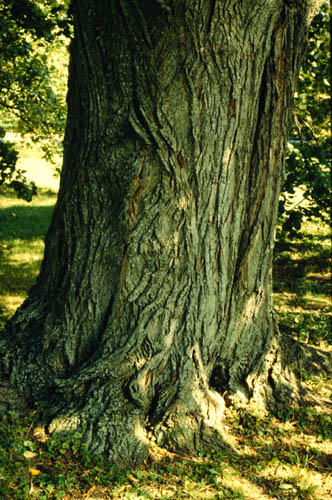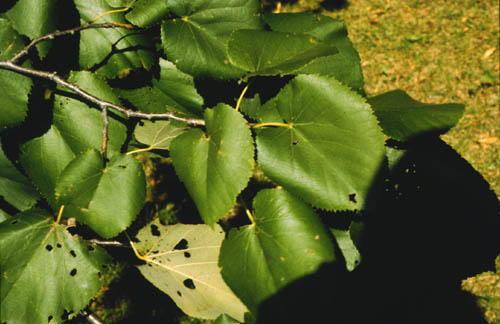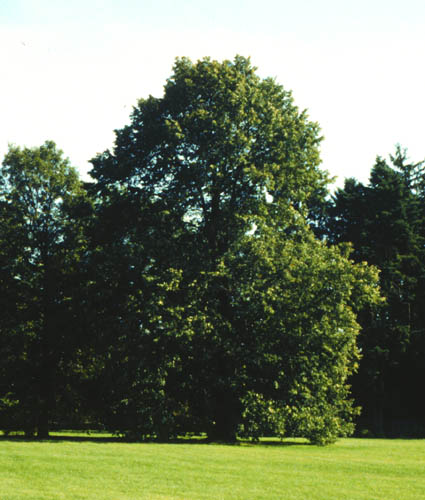Tilia platyphyllos
Bigleaf Linden
Tiliaceae
ExpandHabitat
- hardy to zone 4
Habit and Form
- a deciduous medium to large tree
- typically 60' to 80' tall
- slightly less in width
- medium texture
- moderate growth rate
Summer Foliage
- deciduous, simple leaves
- alternate leaf arrangement
- ovate to cordate leaf shape
- 2" to 5" long
- sharp leaf margin serrations
- dark green leaf color
- pubescent
Autumn Foliage
- yellow or yellow-green
- not showy
Flowers
- small, individual flowers in loose drooping clusters
- flower clusters with a leaf-like bract
- light yellow or creamy flower color
- blooms in late June and early July
- fragrant
- bees are attracted to the flowers
Fruit
- small round nutlet 0.5" in diameter
- cream color; ribbed
- slightly ornamental in late summer
Bark
- ridges and furrows
- color is brown
- pubescent, reddish-brown stems
Culture
- full sun to light shade
- easily transplanted
- prefers moist, deep, fertile, well-drained soils
- tolerant of difficult growing sites and soils
- urban tolerant
- pollution tolerant
- very pH adaptable
- tolerates hedging well
Landscape Uses
- shade tree
- lawn tree
- street tree
- urban locations
- planter boxes
- as a large hedge
- city malls and plantings
- for formal habit, regularity and symmetry
Liabilities
- attracts bees when in bloom
- Japanese beetles
- aphids
- sooty mold
ID Features
- no terminal bud
- lateral buds are green-brown, valvate-like buds
- pubescent stems
Propagation
- by seed
- cultivars mostly by bud grafting or cuttings
Cultivars/Varieties
This plant is not grown commonly in the Unites States, so the following cultivars are known primarily from European records.
'Aurea' - The twigs and branches of this form are yellowish in color, but the effect is not outstanding.
'Fastigiata' - Most notable for its acending branches, this plant has an upright-oval shape.
'Lacinata' - This is a catch-all category for forms with leaves that are oddly lobed or dissected. The plants usually are much smaller than the species.
'Rubra' - The young twigs of this plant show reddish coloration in winter.
'Tortuosa' - This tree features branches that are twisted and coiled, though the effect is not said to be attractive.


